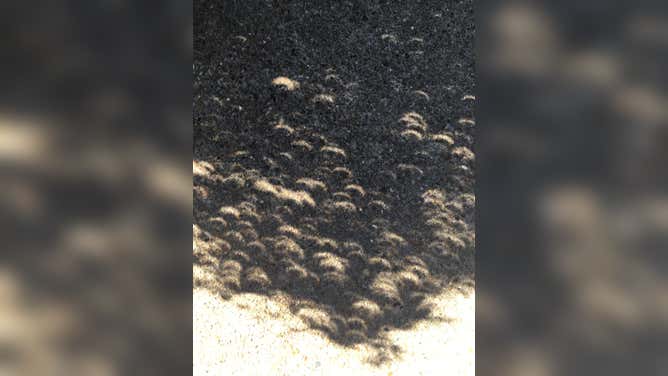How to use a pinhole camera to watch the total solar eclipse
Pinhole cameras, also known as pinhole projectors, are another way to experience an eclipse without risking injury to your eyes. A pinhole camera is also a safe eclipse activity for young children who might not be able to keep on their solar glasses.
How to make a pinhole projector to view the solar eclipse
NASA's step-by-step guide to creating a pinhole projector using a cereal box to watch the total solar eclipse.
Pinhole cameras, also known as pinhole projectors, are another way to experience a total solar eclipse. Plus, they are easy to make with items found around the house or at school.
On April 8th, a total solar eclipse will be visible in parts of Mexico, Canada and 14 states in the U.S.
To safely view the 2024 total solar eclipse, you'll need glasses with solar filters, sometimes known as eclipse or solar glasses. You must keep your glasses on during all partial eclipse phases when looking at the Sun. Only about a 100-mile wide path will experience totality for a few minutes.
LIVE COVERAGE: TOTAL SOLAR ECLIPSE APRIL 2024
Alternatively, a pinhole camera or pinhole projector is another safe way to watch the eclipse from start to finish with no risk to your eyesight.

A partially eclipsed sun is reflected on a pinhole camera set up at India Gate, on June 21, 2020, in New Delhi, India. (Photo By Biplov Bhuyan/Hindustan Times via Getty Images)
(Getty Images)
The NASA video at the top of this story shows you how to make a pinhole projector with a cereal box. You could also use any other box you have on hand. Without a box, you'll use two pieces of card stock, aluminum foil and tape to make a simple pinhole project.
The tiny hole you make with a pin or paper clip acts like a camera lens. As light enters the pinhole, it is projected onto the other side of the box.
Instead of making a pinhole projector, household items such as a colander can be used to project images of the Sun.
A pinhole camera is also a safe eclipse activity for young children who might not be old enough to keep on their solar glasses, since the eclipse will last several hours from the beginning of a partial eclipse through totality and, again, a partial eclipse.
TOTAL SOLAR ECLIPSE HAS MILLIONS ACROSS U.S. AWAITING ONCE-IN-A-LIFETIME EXPERIENCE
Another fun activity is to watch the shadows change throughout the eclipse.
The photo below from the October 2023 annual eclipse shows some examples of shadow shapes you could see during the April eclipse.

Crescent-shaped shadows on the ground in Louisiana during the annular eclipse in October 2023.
(Shreveport NWS / NOAA)
